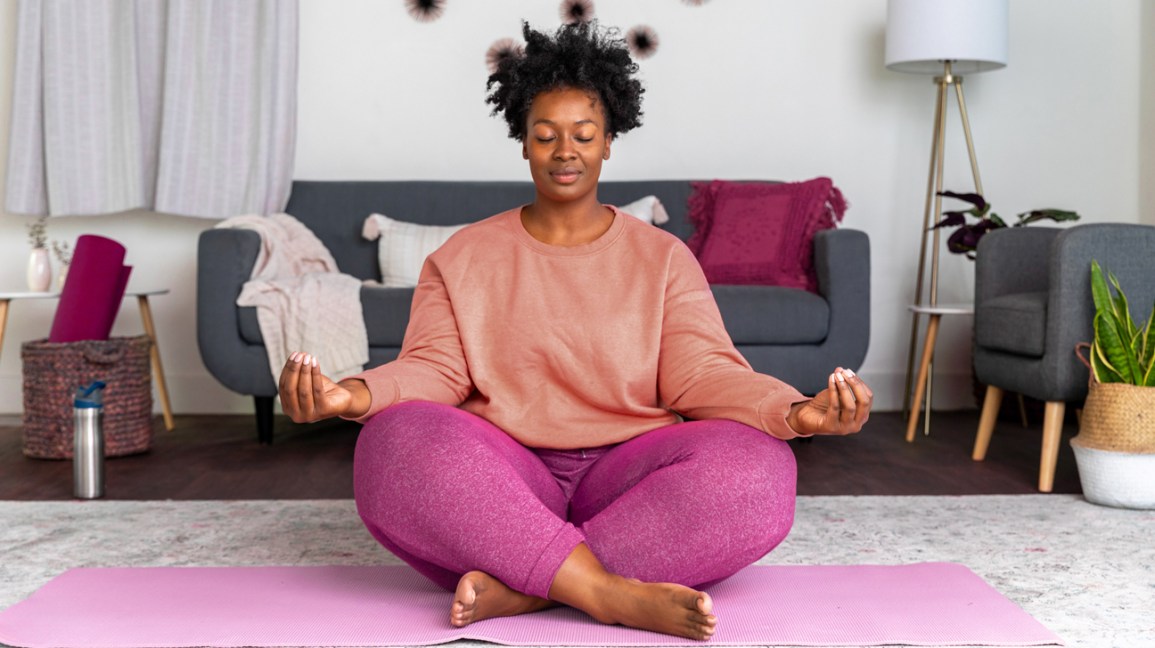
When trying to meditate into sleep, it can be helpful to follow a specific routine. You don't have need for it to be complicated. But, it can be useful if you're having difficulty falling asleep. Try switching off your phone and tablet and getting into bed. Journaling can be another useful habit. It will help you to clear your mind and signal to your body to relax. Try these methods to start meditation if you are new to it.
You may be given specific instructions to follow when you meditate and fall asleep. You can choose your own pace. Multiple studies have shown meditation before bed can improve your ability focus during the night. Some report more clarity in dreams and feeling more awake at the beginning of the day. Regardless of the method you choose, it is recommended to try it at least once. Here are some tips.

You should make guided meditations a routine. You should meditate before going to bed. Keep your body upright and allow your brain to relax. You can increase your risk of falling asleep in a supine position when you try to fall asleep. This could lead to sleep apnea which can adversely affect your health. You should get up from the supine position before you go to sleep and roll on your side.
Guided meditation is another option. While it requires a little practice, meditating will help you relax and get to sleep. There are many options for meditation, so make sure you choose the right one for you. Generally, guided meditation methods incorporate soothing sounds and music to help you relax. Like any meditation, it is important to create a conducive environment. You can start to experiment with the method once you have found it that works for you. You will be amazed at what you can achieve.
Meditation guided by a professional is a great way for you to fall asleep. This involves focusing on the present while letting go past and future thoughts. It may be difficult at first, but with practice, your mind will slow down and eventually fall asleep naturally. Relaxing will help you fall asleep easier. Meditation will become easier to master the more you meditate. You will live a more fulfilling life if this technique is mastered.

Learning to relax in the present moment is the first step to meditation for sleep. This is how your mind, body and soul can calm down. You will experience a deeper, more peaceful night if you are able to focus on the moment. You might feel tired during the day and not be able to fall asleep. By learning how to meditate into your sleeping space, you'll be able to enjoy a sounder sleep. Guided meditation can be a great way to get better sleep, even if meditation is not your thing.
FAQ
What should I eat?
Consume lots of fruits, vegetables. They provide vitamins and minerals to keep your immune system strong. Also, fruits and vegetables are rich in fiber. This makes them filling as well as helping with digestion. Include at least five portions of fruit and vegetables per day.
Drink plenty of water. Water helps flush toxins out of your body and makes you feel fuller between meals. Drink about eight glasses each day.
Choose whole grains over refined grains. Whole grains have all the nutrients they need, including B vitamins. Refined grains have been stripped of some of their nutrition.
Sugary drinks should be avoided. Sugary drinks are high in empty calories and can lead to obesity. Instead, choose water, milk, and unsweetened tea.
Avoid fast food. Fast food has little nutritional value. It may taste great but it won't give you the energy you need to function properly. Stick to healthier options such as salads, soups, sandwiches, and pasta dishes.
Reduce your alcohol intake. Alcohol can lead to poor nutrition and empty calories. Limit yourself to no more than two alcoholic beverages a week.
Reduce your consumption of red meat. Red meats are high in saturated fat and cholesterol. Opt for lean cuts of beef, pork, lamb, chicken, fish, and turkey instead.
These are 5 ways you can live a healthy and happy life.
Living a healthy lifestyle involves eating right and exercising regularly. Good eating habits include avoiding processed foods, sugar, unhealthy fats, and avoiding junk food. Exercise is good for your body and muscles. Sleeping enough is good for memory and concentration. Managing stress reduces anxiety and depression. Fun keeps us happy and healthy.
How does an antibiotic work?
Antibiotics are drugs that destroy harmful bacteria. Antibiotics are used for treating bacterial infections. There are many types and brands of antibiotics. Some are administered topically, while others can be taken orally.
People who have been infected with certain germs may need antibiotics. For example, if someone has had chicken pox, he or she might take an oral antibiotic to prevent shingles later on. A penicillin injection might be given to prevent pneumonia in someone who has had strep.
Doctors should prescribe antibiotics to children. Children are more susceptible to side effects from antibiotics than adults.
Diarrhea being the most common side effect of antibiotics. Other side effects that could occur include nausea, vomiting and dizziness. Most of these symptoms disappear after the treatment is completed.
Do I need calories to count?
Perhaps you are wondering what the best diet is for you. or "is counting calories necessary?" It depends on many factors such as your current health, personal goals, preferences, and overall lifestyle.
The Best Diet For Me - Which One Is Right For You?
My current health, my personal goals and lifestyle will determine the best diet for me. There are many different diets, some good and some not so good. Some diets work for some people, while others are not. What should I do? How do I make a good decision?
These are the questions that this article attempts to answer. The article starts by introducing the many types of diets currently available. The pros and cons of each diet are then discussed. We'll then discuss how to choose which one is best for you.
To begin, let's take a quick look at the different types of diets.
Diet Types
There are three main types of diets: low fat, high protein, and ketogenic. Let's discuss them briefly below.
Low Fat Diets
A low-fat diet is one that limits the intake of fats. This is done through reducing the intake of saturated fats (butter, cream cheese, etc.) They are replaced by unsaturated fats such as avocados, olive oil, and cream cheese. If you want to lose weight fast and easily, then a low fat diet is often recommended. This diet can cause constipation, heartburn, and stomach problems. A person may also experience vitamin deficiencies if they don't get enough vitamins.
High Protein Diets
High-protein diets limit carbohydrates and favor proteins. These diets typically have more protein than other diets. These diets are meant to increase muscle mass, and burn more calories. One problem is that they might not be sufficient to provide regular nutrition. They may also be too restrictive and not suitable for everyone.
Ketogenic Diets
Ketogenic diets can also be known as keto diets. They are high on fat but low in carbs and proteins. These foods are popular among athletes and bodybuilders as they allow them to train harder, longer and without becoming tired. You must adhere to all side effects, including fatigue, headaches, nausea and headaches.
Improve immunity with herbs and supplements?
It is possible to boost immune function by using herbs and natural remedies. Examples include ginger, garlic and oregano oils, echinacea, vitamin C, ginkgo loba, and echinacea.
These herbal remedies are not meant to replace medical treatment. These herbal remedies can cause nausea, vomiting, stomach cramps or dizziness.
What is the difference between a calorie or a kilocalorie.
Calories measure the energy content of food. The unit of measurement is called a calorie. One calorie is equal to one degree Celsius in energy.
Kilocalories refer to calories in another term. Kilocalories can be measured in thousandsths of one calorie. 1000 calories is one kilocalorie.
How do I find out what's best for me?
Listen to your body. When it comes to your body's needs for exercise, food, or rest, it is the best. To avoid overdoing it, it's important that you pay attention to what your body is telling you. Be aware of your body and do what you can to maintain good health.
Statistics
- WHO recommends consuming less than 5% of total energy intake for additional health benefits. (who.int)
- In both adults and children, the intake of free sugars should be reduced to less than 10% of total energy intake. (who.int)
- The Dietary Guidelines for Americans recommend keeping added sugar intake below 10% of your daily calorie intake, while the World Health Organization recommends slashing added sugars to 5% or less of your daily calories for optimal health (59Trusted (healthline.com)
- This article received 11 testimonials and 86% of readers who voted found it helpful, earning it our reader-approved status. (wikihow.com)
External Links
How To
How to stay motivated to stick to healthy eating and exercise
Healthy living: Motivational tips
Motivational Tips for Staying Healthful
-
Make a list of your goals
-
Realistic goals
-
Be consistent
-
When you reach your goal, reward yourself
-
If you fail the first time, don't lose heart
-
Have fun